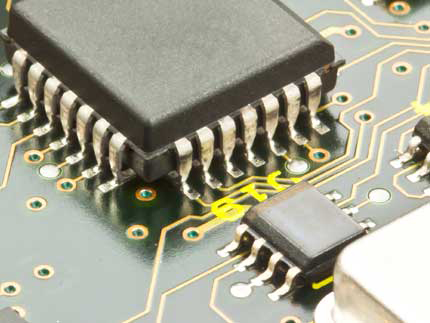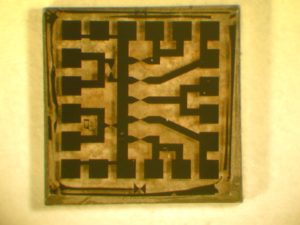Unlock Microcontroller ATtiny12 Firmware
Unlock Microcontroller ATtiny12 Firmware from program memory, and readout firmware from MCU ATtiny12 to recover whole content from processor ATtiny12.

The fast-access register file concept contains 32 x 8-bit general-purpose working registers with a single-clock-cycle access time. This means that during one single clock cycle, one ALU (Arithmetic Logic Unit) operation is executed. Two operands are output from the register file, the operation is executed, and the result is stored back in the register file – in one clock cycle.
Two of the 32 registers can be used as a 16-bit pointer for indirect memory access. This pointer is called the Z-pointer, and can address the register file and the Flash program memory if crack Microcontroller pic16f727 program.
The ALU supports arithmetic and logic functions between registers or between a constant and a register. Single-register operations are also executed in the ALU. Figure 2 shows the ATtiny11/12 AVR RISC microcontroller architecture. The AVR uses a Harvard architecture concept with separate memories and buses for program and data memories.
The program memory is accessed with a two-stage pipelining. While one instruction is being executed, the next instruction is pre-fetched from the program memory. This concept enables instructions to be executed in every clock cycle. The program memory is reprogrammable Flash memory after crack Microcontroller pic18f14k22 heximal.
With the relative jump and relative call instructions, the whole 512 address space is directly accessed. All AVR instructions have a single 16-bit word format, meaning that every program memory address contains a single 16-bit instruction.
During interrupts and subroutine calls, the return address program counter (PC) is stored on the stack. The stack is a 3-level-deep hardware stack dedicated for subroutines and interrupts. The I/O memory space contains 64 addresses for CPU peripheral functions as control registers, timer/counters, and other I/O functions. The memory spaces in the AVR architecture are all linear and regular memory maps if crack Microcontroller pic18lf13k50 program.
All the register operating instructions in the instruction set have direct- and single-cycle access to all registers. The only exception is the five constant arithmetic and logic instructions SBCI, SUBI, CPI, ANDI, and ORI between a constant and a register and the LDI instruction for load-immediate constant data.
These instructions apply to the second half of the registers in the register file – R16..R31. The general SBC, SUB, CP, AND, OR and all other operations between two registers or on a single register apply to the entire register file. Registers 30 and 31 form a 16-bit pointer (the Z-pointer) which is used for indirect Flash memory and register file access. When the register file is accessed, the contents of R31 are discarded by the CPU.
The high-performance AVR ALU operates in direct connection with all the 32 general purpose working registers. Within a single clock cycle, ALU operations between registers in the register file are executed. The ALU operations are divided into three main categories – arithmetic, logic and bit-functions. Some microcontrollers in the AVR product family feature a hardware multiplier in the arithmetic part of the ALU.
The ATtiny11/12 contains 1K bytes on-chip Flash memory for program storage. Since all instructions are single 16-bit words, the Flash is organized as 512 x 16 words. The Flash memory has an endurance of at least 1000 write/erase cycles. The ATtiny11/12 Program Counter is 9 bits wide, thus addressing the 512 words Flash program memory.
The ATtiny11/12 AVR RISC Microcontroller supports powerful and efficient addressing modes. This section describes the different addressing modes supported in the ATtiny11/12. In the figures, OP means the operation code part of the instruction word.
Tags: microcontroller encrypted archive unlock,microcontroller encrypted code unlock,microcontroller encrypted content unlock,microcontroller encrypted data unlock,microcontroller encrypted eeprom unlock,microcontroller encrypted file unlock,microcontroller encrypted firmware unlock,microcontroller encrypted information unlock,microcontroller encrypted memory unlock,microcontroller encrypted program unlock


